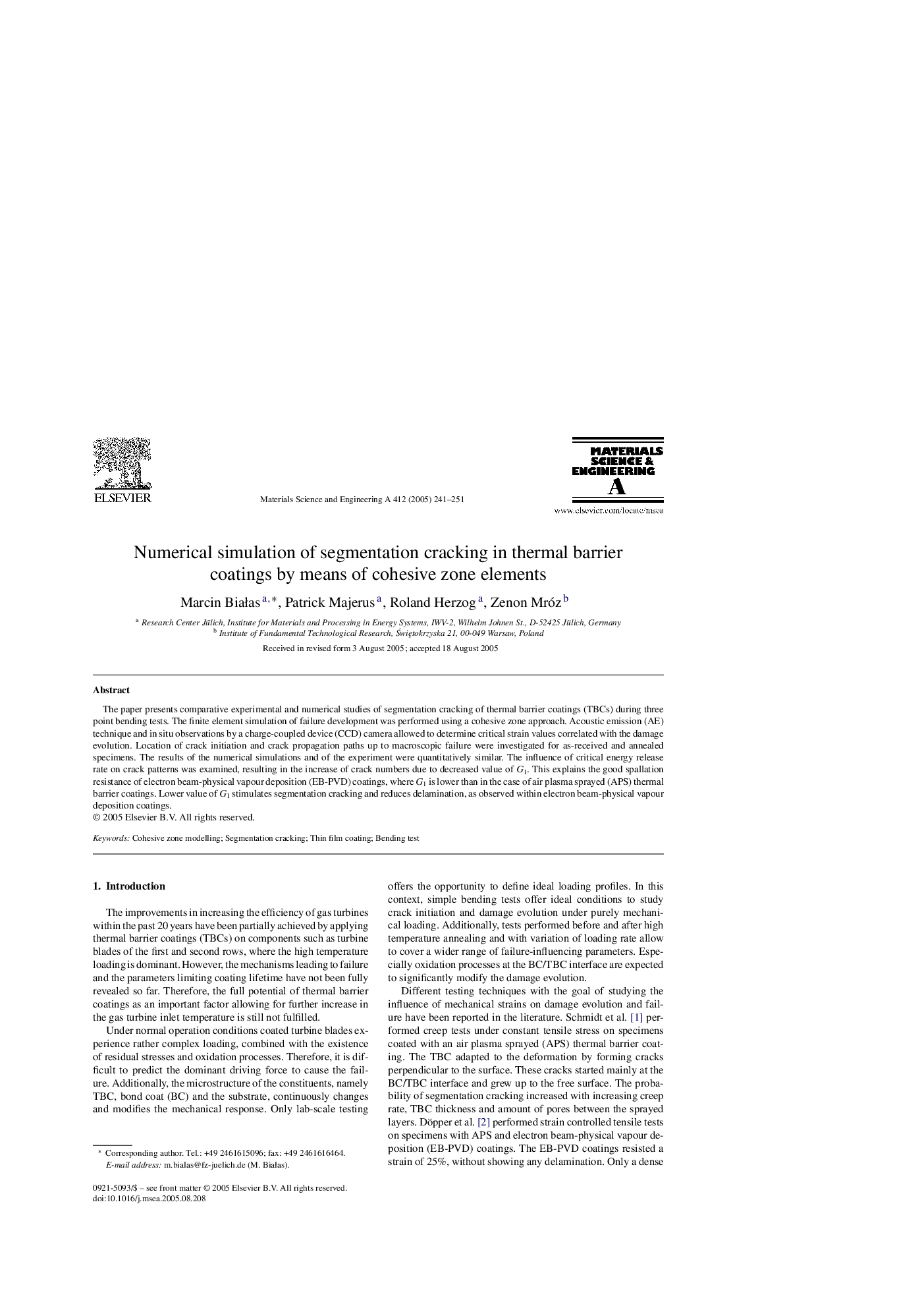| Article ID | Journal | Published Year | Pages | File Type |
|---|---|---|---|---|
| 9795580 | Materials Science and Engineering: A | 2005 | 11 Pages |
Abstract
The paper presents comparative experimental and numerical studies of segmentation cracking of thermal barrier coatings (TBCs) during three point bending tests. The finite element simulation of failure development was performed using a cohesive zone approach. Acoustic emission (AE) technique and in situ observations by a charge-coupled device (CCD) camera allowed to determine critical strain values correlated with the damage evolution. Location of crack initiation and crack propagation paths up to macroscopic failure were investigated for as-received and annealed specimens. The results of the numerical simulations and of the experiment were quantitatively similar. The influence of critical energy release rate on crack patterns was examined, resulting in the increase of crack numbers due to decreased value of GI. This explains the good spallation resistance of electron beam-physical vapour deposition (EB-PVD) coatings, where GI is lower than in the case of air plasma sprayed (APS) thermal barrier coatings. Lower value of GI stimulates segmentation cracking and reduces delamination, as observed within electron beam-physical vapour deposition coatings.
Related Topics
Physical Sciences and Engineering
Materials Science
Materials Science (General)
Authors
Marcin BiaÅas, Patrick Majerus, Roland Herzog, Zenon Mróz,
